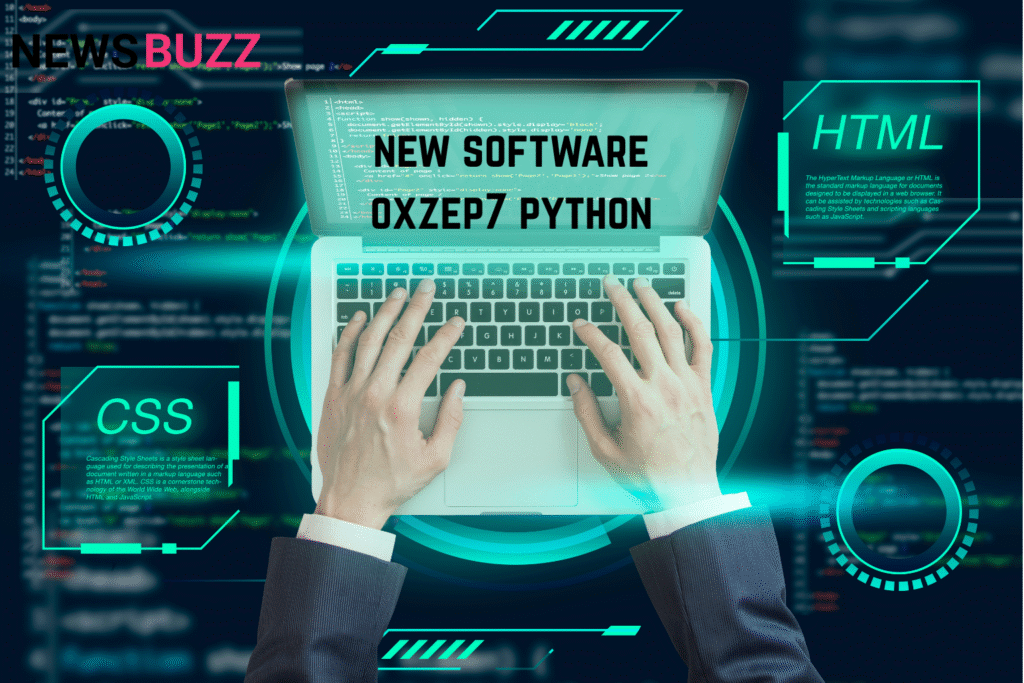Introduction
Software development is evolving faster than ever. Developers are seeking tools that are not only fast and efficient but also intelligent and adaptable. Enter Oxzep7, a revolutionary new Python-based software framework designed for the modern coder.
Whether you’re building web services, AI models, automation tools, or real-time applications, Oxzep7 Python software provides a flexible and forward-thinking foundation. This article dives deep into what makes Oxzep7 stand out, how it works, and how you can use it to write cleaner, faster, and smarter code.
What Is Oxzep7 Python Software?
Oxzep7 is a modular Python framework built for developers who value structure, speed, and scalability. Unlike traditional frameworks that often force you into rigid patterns, Oxzep7 encourages flexibility. It allows you to plug in only what you need and adapt its features to your unique use case.
The framework is designed with both individual developers and collaborative teams in mind. It promotes clean architecture, fast execution, and easy maintenance.
Key Characteristics:
- Minimalist Core: No bloated components—just essential tools that work.
- Asynchronous-Friendly: Native support for async operations, ideal for real-time systems.
- Plug-and-Play Modules: Build and reuse modules across different projects.
- Developer-Centric Design: Prioritizes ease of use, readable syntax, and smart defaults.
The essence of Oxzep7 is efficiency through simplicity—you get everything you need without unnecessary weight.
Also Read: Zryly.com Internet: A Smarter Way to Compare and Choose Internet Providers
Why Choose Oxzep7 Over Other Python Frameworks?
Lightweight but Powerful
Most traditional frameworks come with predefined ways of doing things, which can slow down innovation. Oxzep7 flips that by letting you define your architecture your way.
Built for Modern Needs
From AI implementation to microservices and automation pipelines, today’s developers face challenges that older tools weren’t built for. Oxzep7 is designed to meet these demands head-on.
Quick Learning Curve
If you already know Python, picking up Oxzep7 is straightforward. Its structure is intuitive, and it avoids unnecessary complexity.
Community-Driven Potential
As an emerging framework, Oxzep7 has room to grow. It’s being shaped by feedback from early adopters, meaning it evolves quickly and addresses real-world developer needs.
Use Cases for Oxzep7 Python Software
AI & Machine Learning Integration
Oxzep7 is perfect for projects that rely on machine learning or data analysis. Its modularity makes it easy to isolate model logic, training routines, and API endpoints without mixing concerns.
Web Services & APIs
Need a lightweight backend for a mobile app or frontend dashboard? Oxzep7’s clean routing system and async support make building APIs fast and efficient.
Automation & Scripting
For automation scripts and cron jobs, Oxzep7’s simplicity reduces overhead. Its clean interface lets you focus on logic, not setup.
Real-Time Systems
With built-in support for async functions and fast I/O handling, Oxzep7 is suitable for games, chat apps, live dashboards, and other real-time environments.
Step-by-Step Guide: Getting Started with Oxzep7
Here’s how to begin using Oxzep7 in your next Python project.
Step 1: Install Python 3.11+
Make sure you’re using the latest version of Python to unlock performance improvements.
bashCopyEditsudo apt install python3.11
Step 2: Set Up a Virtual Environment
Keep dependencies isolated by creating a virtual environment:
bashCopyEditpython3.11 -m venv env
source env/bin/activate
Step 3: Install Oxzep7
Assuming Oxzep7 is available via pip (or similar), install it:
bashCopyEditpip install oxzep7
Step 4: Initialize a Project
Start a new project directory and initialize it with Oxzep7:
bashCopyEditoxzep7 init myproject
cd myproject
Step 5: Create a Custom Module
Within the project, create a reusable module. Here’s a sample:
pythonCopyEditfrom oxzep7.module import BaseModule
class HelloWorld(BaseModule):
def run(self):
return "Hello from Oxzep7!"
Step 6: Run the Application
Execute the main application using:
bashCopyEditpython run.py
That’s it—you’ve got your first Oxzep7 app up and running!
Best Practices for Working with Oxzep7
To make the most of Oxzep7, keep these principles in mind:
- Keep Modules Small and Focused: Each module should do one thing well.
- Use Async Where Appropriate: Speed up performance by making I/O non-blocking.
- Write Tests Early: Use
pytestorunittestto ensure modules work as expected. - Document Your Code: Clear docstrings help others (and your future self) understand how each part works.
- Stay Updated: As Oxzep7 grows, new updates may include optimizations and new features.
Also Read: GetWhoCares.com Tech: A Human-Centered Approach to Gaming and Technology Support
Conclusion
The new software Oxzep7 Python isn’t just another tool in a crowded field—it’s a smart, modern framework created with the real needs of developers in mind. Its modular design, AI-readiness, and performance focus make it a strong choice for building everything from small scripts to complex applications.
Oxzep7 is perfect for developers who want more freedom without losing structure. It’s easy to learn, easy to scale, and incredibly flexible. Whether you’re a solo developer, part of a startup, or building enterprise software, Oxzep7 can help you create smarter, faster, and cleaner code.
If you’re ready to modernize your workflow and simplify complex projects, give Oxzep7 a try—you might never look back.
Frequently Asked Questions (FAQs)
1. What is the main goal of Oxzep7 Python software?
Oxzep7 is designed to help developers build modern applications quickly, with a focus on modularity, AI integration, and high performance.
2. Is Oxzep7 beginner-friendly?
Yes. If you’re familiar with basic Python, you’ll find Oxzep7 intuitive. It avoids heavy boilerplate code and follows logical structures.
3. Can I use Oxzep7 for machine learning projects?
Absolutely. Its modular design makes it easy to plug in ML models and manage them independently from the rest of your code.
4. Is Oxzep7 suitable for production-level projects?
Yes. Its lightweight nature and support for async processing make it ideal for scalable, real-world applications.
5. How does Oxzep7 differ from Flask or Django?
Oxzep7 is more modular and lightweight than Django, and more structured and AI-ready than Flask. It fills the gap for developers looking for both power and simplicity.



